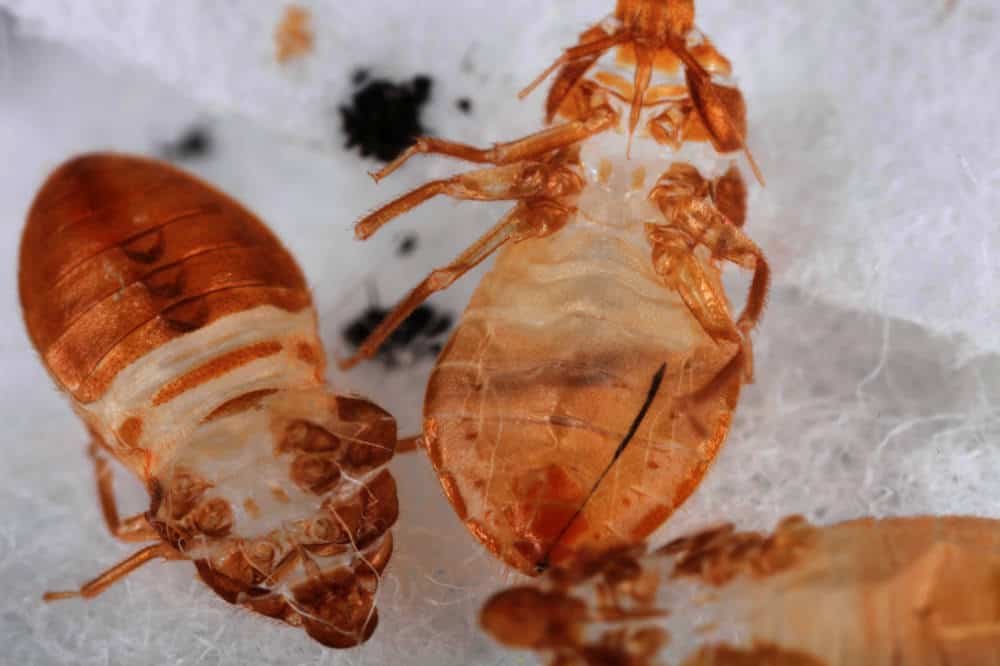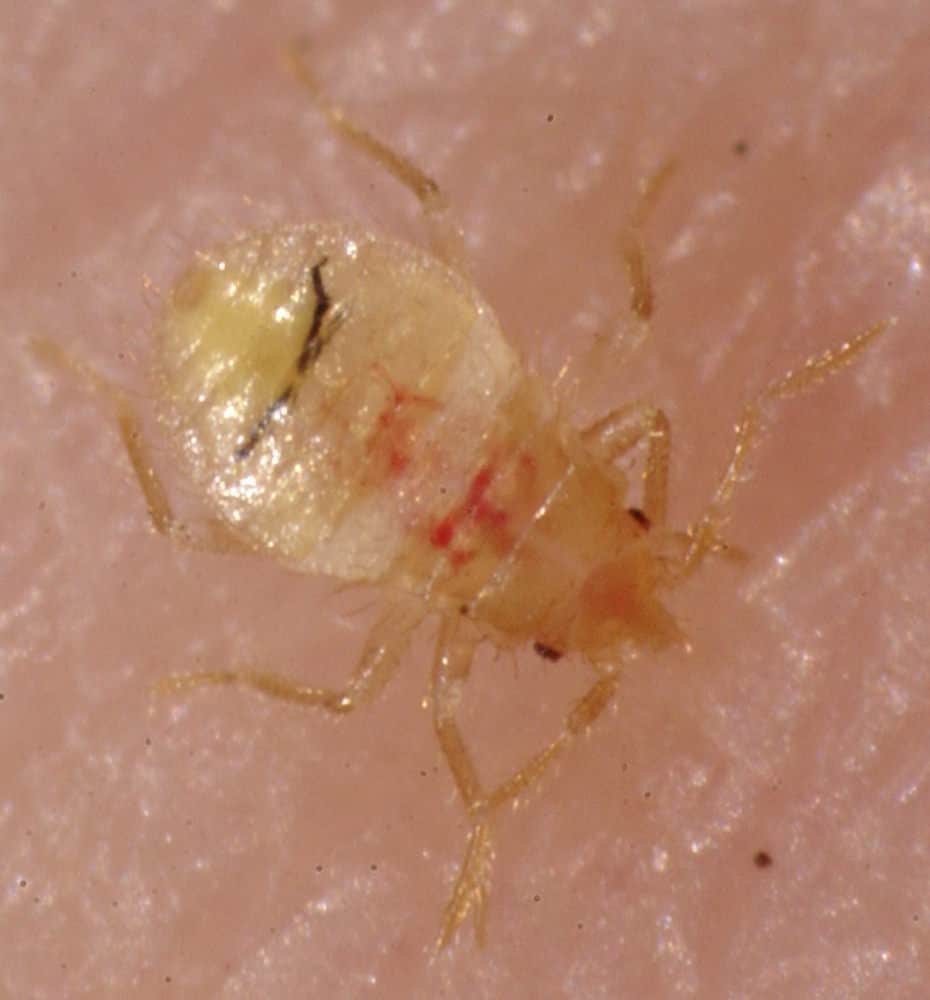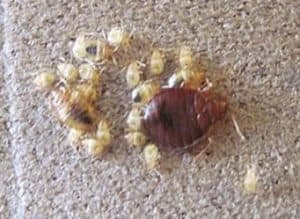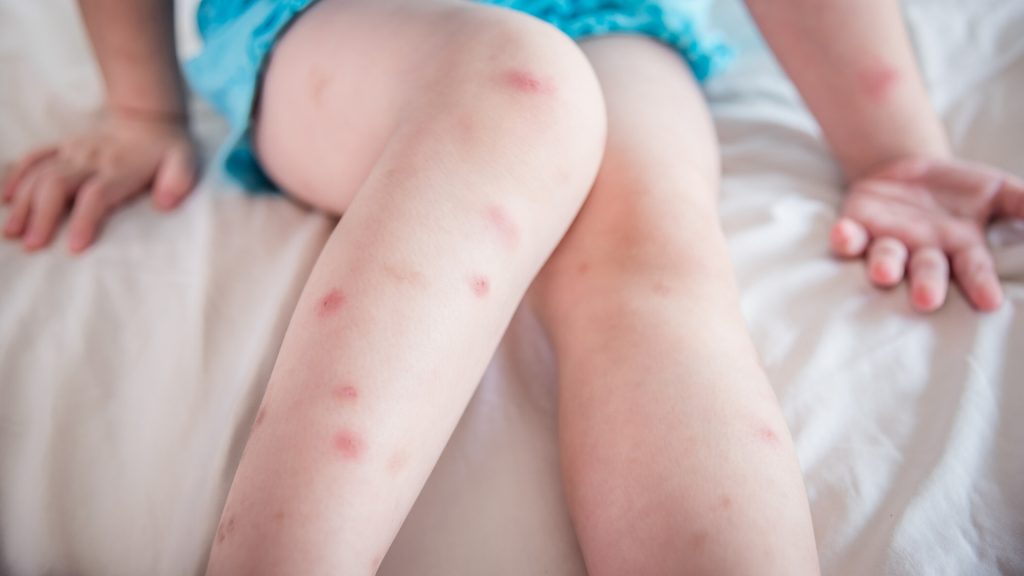If you are a fan of mythical creatures and stories about them, you certainly know about vampires. There are so many famous fictional vampires that you can see in movies, novels, cartoons, or comic books. Two of the most prominent imaginary vampires are the Cullen family from Twilight series and Count Dracula from Bram Stoker’s Dracula. Even if you never watch their movies, you might still know them since they are indeed that famous.
The vampires are notorious about many things, but they are most well-known for their needs to feed themselves with human blood. However, as there are no evidences of their existences in real world, you don’t have to worry they will drink yours. But do you know there are some real blood-sucker creatures that you really need to be careful of?
Bed bug is one of them. As the name suggests, those insects are commonly found hiding near your bed, waiting for you to be asleep so they can consume your blood. They do this for all their life since the day they hatch from eggs until they die as adults. Needless to say how annoying they could be, even when they are still babies. You have to be cautious of them since the very, very beginning.
This article will explain everything you need to understand about baby bed bugs so you’ll know how to handle them and maximize your chance to exterminate them before they grow up. We may address some things about adult bed bugs too, but it won’t be too detailed since our focus here is baby bed bugs. If you need to know further about adult bed bugs, you can find our elaboration about them in other articles, also in this website. You can easily search them by clicking “Bed bugs” category on the sidebar.
When Bed Bugs were Babies
Bed bugs, or Cimex lectularius, are public health pests. They are parasitic insects and have been commonly known as so for thousand years. Since they are parasites, they need host organisms to survive. Nevertheless, they do not live inside the host’s body like other parasites. Instead, they live around their host and feed on the host’s blood. The host could be animal, but mostly it’s human. Bed bugs find their host by detecting the host’s carbon dioxide that released in respiratory process, as well as the host’s body heat or scent.
People tend to think that bed bugs are only found in deprived environments such as slums, mass shelters, or poorly-maintained orphanages, but researches have proven that their habitat has nothing to do with hygiene. It’s more accurate to say that bed bugs mostly occupy high-density areas with many human beings as their meal sources. They especially inhabit places where the rooms are used by many come-and-go people like hotels, hospitals, motels, guest houses, and such. They also can be unintentionally brought away in the luggages or other belongings, causing them to be found as well in long-distance transportation modes like trains, buses, airplanes, or cruise ships. However, they are generally found in ordinary houses too. Their bloodsucking nature makes them topped the list among bothersome household pests.
Like all creatures in this world, bed bugs do not just appear as adults. They undergo three phases of development: eggs, babies or nymphs, and adults. Female bed bugs, once they reach adulthood, can lay up to 250 eggs during their lifetime. Some of them are even able to achieve 500 eggs. They productively lay eggs by popping between one to five eggs out every day. The eggs will hatch within six until ten days.
Right after the eggs hatch, they become baby bed bugs, also universally known as nymphs. This baby/nymph phase consists of five stages. Each stages are marked by increasing body length and growth as the baby bed bugs feed on their host’s blood. This baby/nymph phase lasts for about five until seven weeks before baby bed bugs become full adults.

Source: bed-bugs-handbook.com/images/440xNxbblifecycle.jpg.pagespeed.ic.r7MtdJ65QL.jpg
Since baby bed bugs need meal to grow up, they consume blood as soon as they hatch in order to prevent themselves from dying of starvation. They eat more frequently than adult bed bugs. Usually baby bed bugs look for blood meal at least one time in a day. After their first eating, they can survive for about three to six months without feeding on blood. However, this rarely happens, since they require nutritions to reach the next stage of baby/nymph phase.
Baby bed bugs are also molting, a common process for animals or insects to shed their old skins, shells, feathers, or hair to allow new ones to grow. Baby bed bugs shed their outer skin in every stage of baby/nymph phase when they have gotten enough nutrients for a stage and are ready to continue to the next stage. Their bodies are growing bigger and longer, so the skin can not fit them anymore. That’s why they have to cast the skin and make way for a new one. They keep molting until they reach adulthood, when they completely stop growing.

Source: pestseek.com/wp-content/uploads/2017/11/close-ups-of-3-shed-skins-of-5th-instar-bed-bug-nymphs_5424452420_o.jpg
Once baby bed bugs shed their skins, they leave the casing shells behind. Human can spot these shells more easily than finding the real baby bed bugs. Therefore, if you discover this kind of shells in your house, you need to be wary. It is a clear sign that baby bed bugs (and their adult families) are hiding somewhere in your house, prepared to feed on your blood.
What Do Baby Bed Bugs Look Like?
Baby bed bugs are oval-shaped and slim. The moment baby bed bugs hatch from eggs, they are almost transparent, barely have any color. After they get their first blood-feeding, their color gradually change into a mix of faded-white and yellow. There is also some red lump in their bodies from the host’s blood they drank.

Source: nitrocdn.com/ijwhzDBQwcPgcrPhellTJRyOhjYnuwoZ/assets/static/source/rev-5fc8111/wp-content/uploads/2017/11/cimex-n1-feeding-1_324776027_o.jpg
Their color keep changing in every stage of baby/nymph phase. The more they feed on blood, the more browny they become. The blood is digested inside their bodies, then the nutrition and pigment from it turns their bodies into a reddish-brown. This color remains so when they reach adulthood, and it never changes again.
The recently-hatched baby bed bugs are so tiny with only 0,06 inches or 1,5 mm length, smaller than grain. They grow longer for about 0,02 inches or 0,5 mm for each stages until the fourth stage. There is a significant change of baby bed bugs’ growing size from fourth stage to fifth stage, that is 0,05 inches or 1,5 mm. After reaching the fifth stage, they grow once more to completely become adults. Their last growing size is back to normal, 0,02 inches or 0,5 mm.
Their nearly-translucent body, as well as their petite size, cause baby bed bugs are so difficult to notice by naked eyes, especially when they wandering on a white surface. If your mattress, sheets, pillow, or blanket are plain white without other colors or any dark patterns at all, you might never see them. As mentioned above, it’s easier to detect them by spotting the shed-skins they left behind.
How to Distinguish Baby Bed Bugs from Adult Bed Bugs?
There are some significant physical differences between baby bed bugs and adult bed bugs that you can use to distinguish them on sight. Here they are:
-
From their color
The easiest way to differentiate baby bed bugs and adult bed bugs is by looking at their color. Baby bed bugs are whitey-yellowy with some red spot from the blood they consumed earlier, while adult bed bugs are completely brown with some reddish shade.
-
From their size and shape
Baby bed bugs are small-scale versions of adult bed bugs. A fully grown adult bed bug is about 0,19 inches or 5 mm long. Its body shape is almost totally round. Meanwhile, the maximum size of baby bed bugs after they reach their final baby/nymph stage is about 0,17 inches or 4,5 mm. Their bodies are still oval and flat, and will get rounder everytime they shed skin and grow.
-
From their skin-shedding
Bed bug’s molting is only for babies. Adult bed bugs do not shed their skins anymore. If you spot bed bug’s casing shell, it must be left behind by baby bed bugs. However, baby bed bugs do not wander far alone. If you see their shells, it means that the adults are there too, hiding in somewhere near.

Source: deadpestz.com/wp-content/uploads/2017/11/bedbuglarvae-300×219.jpg
Other than three aspects above, there is also another major difference between baby bed bugs and the adults, namely their eating frequency and survival rate without food (blood). As mentioned before, baby bed bugs have to feed on blood more often in order to develop into the next stages. Meanwhile, the adults do not grow anymore, so they do not need to eat regularly. They stay alive even though they only have meal once or twice a week. They are even able to survive a whole year without sucking blood. That situation clearly can not be applied to baby bed bugs since they are not ready to be hungry for that long.
However, this aspect of dissimilarity is not related to physical appearance, so you can not use it to directly distinguish them.
Where Do I Find Baby Bed Bugs?
Baby bed bugs are hard to find. Not only because of their physical appearances, but also because they are not those type of insects who happily expose themselves to human. They rarely come out except at night to go after their unconscious human target and feed on the human’s blood. This is because baby bed bugs are not agile and can not run fast with their short legs. Therefore, they have to make sure their human target is sleeping soundly, so they can drink the human’s blood safely without any possibility to be killed off.
Since bed bugs are communal insects, they hardly live on their own, particularly baby bed bugs who still need their parents. Baby bed bugs usually live with their large families in a hiding place called harborage. These harborages could be located in these areas at your house, where you can examine:
- On or under your mattress;
- Behind your sheets or blanket;
- Inside your headboards or bed frames;
- Behind your baseboards;
- Under your floorboards or tiles;
- Inside your furnitures (cupboards, couches, etc);
- Between your folded clothing;
- Under your tables or chairs;
- Behind your hanging picture frames;
- Behind your wallpapers;
- Behind cracks on your walls;
- Inside your electrical sockets.
If you just returned home from traveling and the places you stayed were happened to be infested by bed bugs, they might tag you along in your bags or clothings. You might want to check those things too.
Do Baby Bed Bugs Bite?
Yes, they do bite. That bite is their way to drink blood from the host’s skin. They have a particular mouth part to penetrate their host’s skin by making a little hole on it. The process of this mouth part going inside the host’s skin is what people know as “bite”.
When baby bed bugs insert their mouth part to the host’s skin, at the same time they inject their saliva which contains painkiller and anticoagulant. This saliva makes the host’s skin feel numb so the host does not sense the bite and will not be awakened from his/her sleep. Afterwards, baby bed bugs will drink the host’s blood through the same mouth part, which also has similar function as straw for human being. They will suck the host’s blood for a few minutes.
Baby bed bugs’ favorite body area to bite is the uncovered one like face, arms, hands, neck, or legs of the host. They usually bite in three or four different places within a close distance (usually inline) on those body parts. However, their bites are not limited to only three or four. It could be much more than that.
How Bad is the Impact of Baby Bed Bugs’ Bite?
Bed bugs do not carry nor transmit any pathogen or infectious disease. Still, their bites are famous for their terrible effects to human’s health, especially skin-related. This also applies for baby bed bugs. Even though they are smaller and weaker, it doesn’t mean that their bites are safer or less impactful. Here are some consequences that may occur after being bitten by baby bed bugs:
-
Skin rashes
Skin rashes are the most common effect of baby bed bugs’ bite. The skin areas where they bit will turn into small or large red spots, along with swelling. These rashes usually appear within minutes until days after they bit the host and will disappear in about two weeks.

Source: pestsamurai.com/wp-content/uploads/2019/11/bed-bug-bites-1024×576.jpg
-
Itchiness
The skin rashes caused by baby bed bugs’ bites usually come with intense itchiness that may linger for several days.
-
Allergic reaction
Symptoms of allergic reaction towards baby bed bugs’ bites are also regularly occurred. However, the host’s body actually shows allergic reaction towards the saliva that injected when the biting happens, not to the bite itself. If the allergic reaction is severe, it may cause anaphylaxis shock.
-
Psychological effect
The thought of some tiny creatures are hiding in your room, waiting silently to suck your blood while you’re sleeping could be too much for some people with anxiety disorder. This may lead to stress and insomnia, even developing unhealthy obsession or phobia towards bed bugs.
Several cases of other effects are also found, like fever, blisters, or bleeding. This does not happen often, though, since those particular effects depend on the human’s health condition.
How to Get Rid of Baby Bed Bugs?
Bed bugs are known to be difficult to get rid of. This could be worse for baby bed bugs since they are smaller and more transparent, make them so much harder to spot. Nonetheless, if you somehow managed to catch them, you can easily squish them with your fingers and throw them away.
That method, however, is definitely useless to get rid of all baby bed bugs who hide somewhere in your house. You can not just seek their harborage out to squish them one by one. Their rapid breeding will replace the dead nymphs soon with new babies in a larger numbers.
You can get rid of baby bed bugs by applying techniques that have been proven successful to eliminate adult bed bugs. The most common (and arguably cheapest) way is using pesticide. There are many products of bed bugs killer from various brands that you can find easily at the market. However, you have to be careful before spraying pesticides to your mattress or pillow. Its residue might be hazardous for your health.
Another method is doing heat treatment. Bed bugs can not survive in high temperature (above 48C or 118F). You can try some simple heat treatment like vacuuming them up with a vacuum cleaner or putting your infested sheets or clothing into a clothes dryer. The heat will eradicate them, including their eggs.
However, the most effective choice of heat treatment is steaming your house thoroughly, especially to the suspected areas of their harborages. This treatment can only be done by professional pest control, so you have to use their service. It will be pricey, but unfortunately, handling bed bugs is notoriously not cheap.
Final Thoughts
Baby bed bugs are miniature version of bed bugs. They both have many similar characteristics, and the most important thing is the babies are not less dangerous than the adults. It’s better to not underestimate them. If you see a sign of them, like their shed skins, please be alert. A bed bugs infestation might be happening in your house. Please be prepared and handle them as early as possible to prevent further invasion.
References
https://www.cryonite.com/news/baby-bed-bugs/
https://www.deadpestz.com/baby-bed-bugs/
https://pestseek.com/baby-bed-bugs/